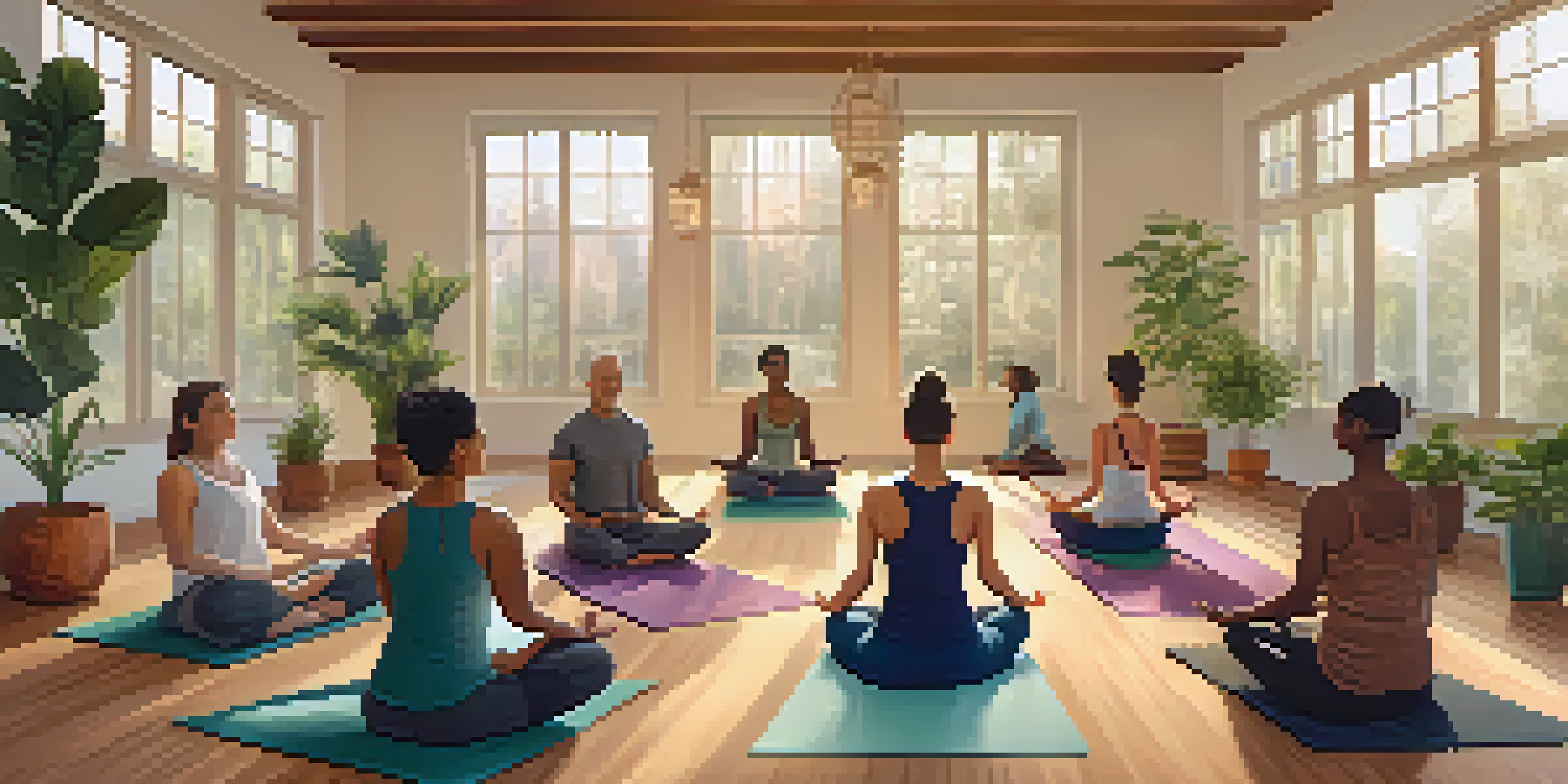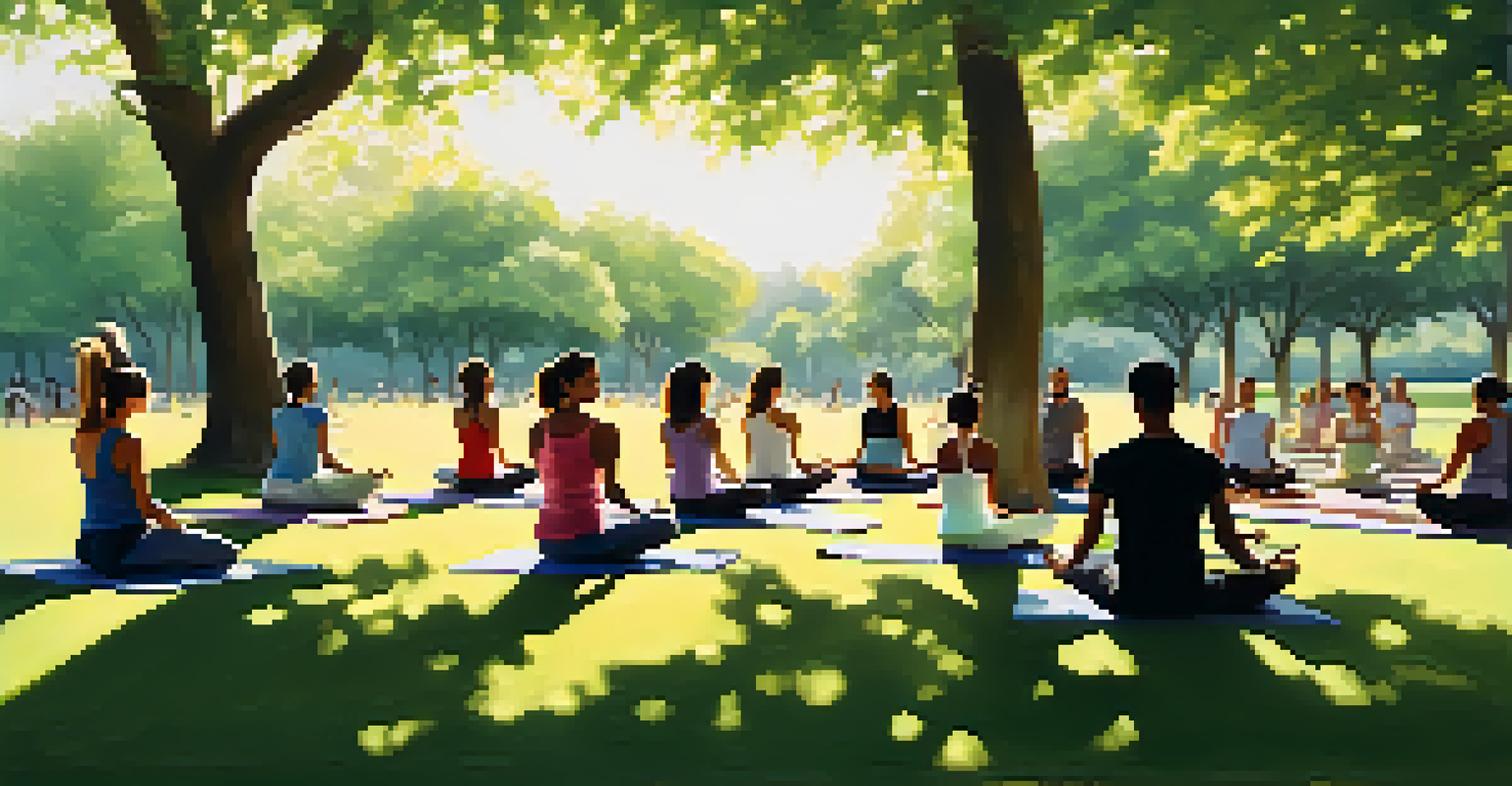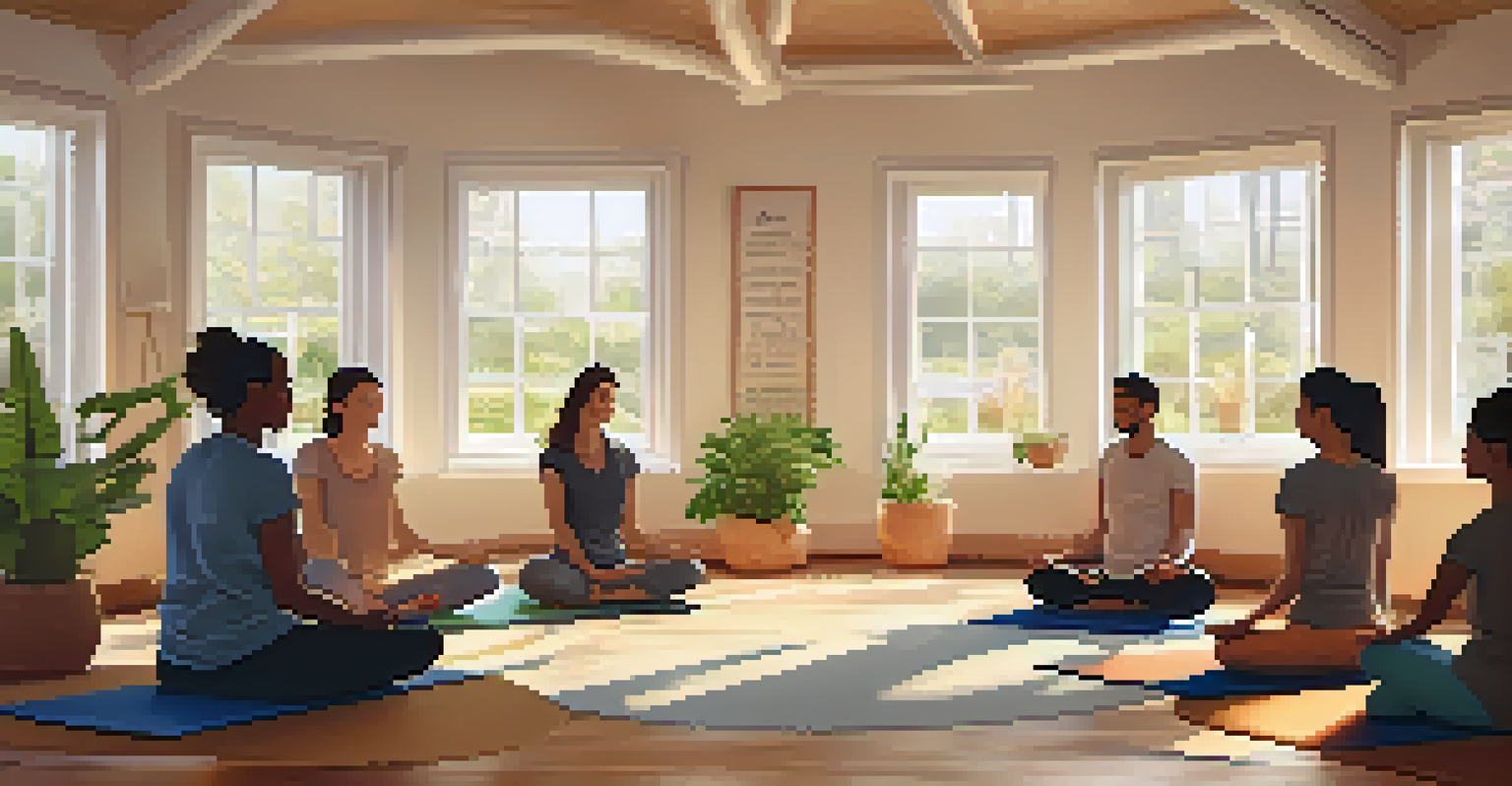Creating a Supportive Yoga Community for Better Practice

The Importance of Community in Yoga Practice
In yoga, community isn't just a nice-to-have; it's essential. Practicing together fosters a sense of belonging and shared experience, which can deepen your practice. Imagine walking into a room filled with familiar faces, all there to support each other on their journeys—this is the magic of a yoga community.
Yoga is not about touching your toes, it’s about what you learn on the way down.
When you share your practice with others, you create an environment that encourages vulnerability and growth. It's easier to push your limits when you know others are cheering you on. This supportive atmosphere can help you feel more motivated to attend classes regularly and explore new techniques.
Moreover, a strong yoga community offers a wealth of resources and knowledge. Members can share tips, introduce new styles, and even create opportunities for workshops, making everyone's practice richer and more diverse. This collaborative spirit transforms individual practice into a collective experience.
Creating a Welcoming Environment for All Levels
To cultivate a supportive yoga community, it's vital to ensure everyone feels welcome. This means creating an inclusive space where practitioners of all levels—beginners to advanced—can feel comfortable. Consider offering classes that cater to different abilities and encourage participants to share their experiences.

Inclusivity also extends to language and approach. Avoid jargon that might alienate newcomers, and instead use simple, relatable terms that everyone can understand. This helps demystify yoga, making it more approachable and inviting for those who may feel intimidated.
Community Enhances Yoga Practice
Practicing yoga in a supportive community fosters belonging and encourages personal growth.
Additionally, fostering a non-competitive atmosphere is crucial. Encourage students to focus on their own practice rather than comparing themselves to others. This mindset helps build confidence and reinforces the idea that yoga is about personal growth, not competition.
Encouraging Connection Through Group Activities
One effective way to strengthen a yoga community is through group activities beyond the mat. Hosting events like potlucks, meditation sessions, or nature hikes can enhance connections among members. These social gatherings allow people to interact in a more relaxed setting, making it easier to develop friendships.
Alone we can do so little; together we can do so much.
Consider organizing workshops that focus on specific themes, such as mindfulness or breathwork. These sessions not only deepen participants' understanding of yoga but also promote discussion and sharing among members. This collaborative learning can create bonds that encourage ongoing support.
Moreover, creating opportunities for group challenges, like a month-long yoga commitment, can foster camaraderie. When practitioners work together towards a common goal, they build connections that reinforce their commitment to yoga and to one another.
Harnessing Technology to Build Community
In today’s digital age, technology can play a significant role in building a yoga community. Utilizing social media platforms allows members to stay connected, share their progress, and support each other outside of class. This can also help in creating a sense of accountability, as members cheer each other on online.
Consider starting a private group on platforms like Facebook or Instagram, where members can share their experiences, ask questions, and offer advice. This virtual space can be a valuable resource for those looking to deepen their practice and connect with others who share their passion.
Inclusivity Is Key in Yoga Spaces
Creating a welcoming environment for all levels ensures that every practitioner feels comfortable and valued.
Additionally, offering virtual classes or workshops can expand your community beyond geographical boundaries. Members who may not be able to attend in-person sessions can still participate, ensuring that everyone feels included and valued, regardless of location.
The Role of Teachers in Fostering Community
Yoga teachers play a pivotal role in creating a supportive community. Their approach can set the tone for how members interact with one another and the space. By fostering an open, approachable demeanor, teachers can encourage students to express themselves and connect with their peers.
Incorporating group discussions or sharing circles into classes can help build rapport among participants. This allows members to express their thoughts and feelings, creating a sense of unity and understanding. When students feel heard and valued, they are more likely to engage with the community positively.
Additionally, teachers should remember to celebrate members' achievements, big or small. Acknowledging progress can help individuals feel more connected and motivated, fostering an environment where everyone feels supported and encouraged.
Building Trust Through Vulnerability
Trust is the foundation of any supportive community, and vulnerability is a key component of building that trust. When members are willing to open up about their struggles and triumphs, it creates an atmosphere where others feel safe to do the same. This mutual sharing fosters deeper connections between practitioners.
Creating spaces for vulnerability can be as simple as allowing time for sharing after class or during workshops. This practice encourages members to express their experiences, challenges, and successes, reinforcing the idea that they are not alone in their journey.
Vulnerability Builds Trust Among Members
Sharing personal experiences within the community fosters deeper connections and understanding among practitioners.
Moreover, vulnerability invites empathy and understanding from others. When someone shares their story, it can resonate with others, creating a bond that strengthens the community. Over time, this collective experience fosters a culture of support and encouragement.
Continuous Growth and Adaptability of the Community
A supportive yoga community is not static; it requires ongoing growth and adaptability to remain relevant. Regularly seeking feedback from members can help understand their needs and preferences, ensuring that the community evolves. This responsiveness fosters a sense of ownership among members, making them feel more invested in the community.
Consider hosting periodic meetings or surveys to gauge interest in new classes, events, or topics. This involvement helps members feel valued and heard, reinforcing their commitment to the community. Plus, it can lead to exciting new initiatives that keep the practice fresh and engaging.

Ultimately, a thriving yoga community is one that embraces change and innovation. By staying open to new ideas and approaches, you can create an environment that continually supports the growth of all members, enhancing their yoga experience and fostering lasting connections.